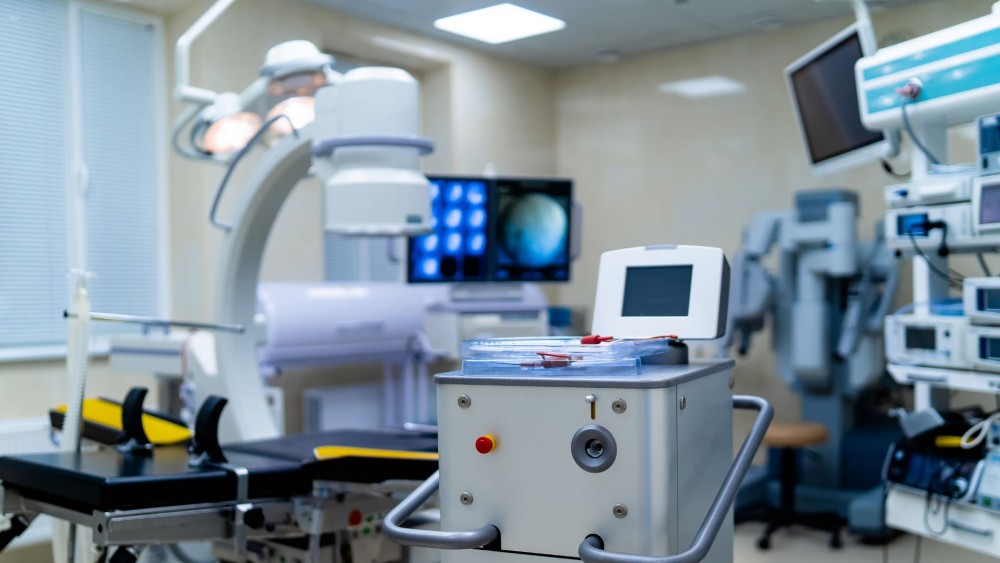Indonesia’s New Health Act Opens Door Further for Investors in the Medical Devices Sector
23 Aug 2023

The COVID-19 pandemic has caused Indonesia to witness how significantly important and rare some medical devices could become with many countries contesting the procurement of, for example, ventilators and oxygen generators. With 275 million people to protect from the infectious disease and approximately 90% of the medical devices and pharmaceuticals still being imported, the need to become more self-sufficient in the supply of medical devices has never been more apparent.
Efforts have been made to ensure the nation's capability to produce its own medical devices and equipment. To that end, the Indonesian government has included the medical device industry as one of its priority industries in the 2015–2035 National Industrial Development Master Plan. Under this commitment, it is hoped that Indonesia's reliance on imported medical devices and pharmaceutical products would decrease to 75% by 2025, and that this could make the country more prepared for a worst-case scenario of another health crisis in the future.
Accordingly, Indonesia has seen an emergence in medical device production companies. According to data from the Indonesian Association of Medical and Laboratory Equipment Companies (Gakeslab), in 2018–2019, Indonesia only had 200 companies. In 2022, that number had grown to 800 industries. At the time of this writing, the number of medical device companies in Indonesia had grown to 1,043.
The government is aware however that the country still needs to work together with, and require investments from, foreign investors. Therefore, to further boost the nation’s capability in garnering investment in the sector, the government introduced a new Health Bill, of which the House of Representatives approved on July 11 of this year.
How The New Health Act Affects The Medical Devices Sector
Through the Health Act, or Law No. 17/2023, the government conducted a consequential reform that may affect the nation’s medical device industry in numerous ways.
First: the act eases the path for the licensing of medical devices. Article 36 of Chapter 15 of Law No. 36/2009 on Health provides protection for the public through the obligation of having a distribution permit in the procurement of every medical device. However, there are criticisms that the licensing arrangements for medical devices in Indonesia are too complicated, which hinders ease of doing business and investing. In response, the new Health Act regulates the intended public protection through the obligation of having business permits for those who will produce or distribute pharmaceutical medical devices – effectively omitting the requirement of a distribution permit. Against this background, it is hoped that the new regulation would make it easier to distribute medical devices and drugs as the process would be streamlined through the government’s existing Online Single Submission (OSS) system, as alluded to in sub-article 5 of article 346 of the new Health Act.
Second: the bill makes it possible for foreign doctors and health workers to work in Indonesia as long as they meet the requirements. This new policy is regulated in article 246 all the way through to article 257 of the new Health Act.
While the new policy remains unpopular among local health workers – and is currently under threat of a legal challenge – concerns about the limited quantity as well as quality of Indonesian health workers continues to be pressing issue, especially within the past several years following the issuance of a universal health coverage law in 2014. Indonesian President Joko Widodo himself echoed the concern, saying that nearly two million Indonesian citizens choose to get medical treatment abroad in early 2023. Another evidence of health worker scarcity is the latest data from the World Health Organization (WHO) which states that the ratio of the number of doctors and patients, including general practitioners and specialists, in Indonesia stands at 0.46 per 1,000 – the third lowest in ASEAN.
By allowing foreign doctors to work in Indonesia, it is hoped that the country would be able to meet the demand for quality health care domestically. Moreover, the presence of foreign doctors in Indonesia could further broaden the Indonesian health industry to new medical technologies and knowledge.
Third: the act also eases business access for foreign investor looking to establish hospitals in Indonesia. Considering the fact that many Indonesians choose to go to other countries to seek health treatment, Mr. Widodo’s eagerness to have internationally renowned hospital operating domestically is understandable. Over the past few years, only two notable international hospital have been opened in Indonesia, namely the Bali International Hospital, which was built in collaboration with the US-based Mayo Clinic, and the Tzu Chi Hospital, which stands under the auspices of the Buddhist Tzu Chi Foundation. The addition of new international hospitals could further open the door for more international-quality medical technologies to be present in Indonesia, further enriching the domestic health industry.
Recommendation for Investors
With the wider investment opportunities offered by the new Health Law, it would be prudent to pay attention as to what medical device products are needed in Indonesia.
Import of Indonesia’s medical instruments in US$
|
No. |
HS Code |
Commodity |
2015 |
2016 |
2017 |
2018 |
2019 |
2020 |
2021 |
2022 |
|
1. |
9018 |
Instruments and appliances used in medical, |
330,955,000 |
439,996,000 |
536,557,000 |
569,575,000 |
626,538,000 |
702,703,000 |
642,806,000 |
719,790,000 |
|
2. |
7017 |
Laboratory, hygienic or pharmaceutical |
7,073,000 |
7,851,482 |
8,786,741 |
10,928,000 |
11,226,000 |
9,487,000 |
10,665,000 |
12,476,000 |
|
3. |
3005 |
Wadding, gauze, bandages and the like, e.g. |
15,274,000 |
20,271,000 |
22,785,000 |
23,692,000 |
27,323,000 |
39,234,000 |
37,147,000 |
42,725,000 |
|
4. |
9402 |
Medical, surgical, dental or veterinary furniture, |
30,459,000 |
43,809,000 |
48,158,000 |
42,780,000 |
51,082,000 |
57,352,000 |
35,101,000 |
36,663,000 |
|
Total |
383,761,000 |
511,927,482 |
616,286,000 |
646,975,000 |
716,169,000 |
808,776,000 |
725,719,000 |
811,654,000 |
||
Source: Trademap
Indonesia’s imports of medical instruments in four categories have had a growing trend since 2015. Indonesia’s biggest source countries for HS 9018’s commodities in 2022 were China with US$177,415,003, followed by the United States with $104,098,000, and Germany with $87,579,000. As for Indonesian imports of HS Code 7017 in 2022, China also topped rank as Indonesia’s largest source with $3,398,000, followed by Vietnam with $1,467,000, and Germany with $1,429,000. For wadding, gauze, and bandages in 2022, China also remains the dominant player with $21,798,000, followed by Germany with $5,073,000, and the United States with $2,521,000.
The rising demand for health services and the increasing priority for health among its citizens are the main contributors for the growing percentage of imports. Indonesia’s health sector has seen significant development in terms of per capita spending and priority for the health index. The World Health Organization (WHO) has recorded the archipelago’s consistent rise in per capita health spending for two decades, from 34 dollars in 2005 to 133 dollars in 2020. As for priority for the health index, Indonesia has also been posting a stable rise – from 4.2% in 2005 to 10.1% in 2020. Additionally, Business Monitor International (BMI), a subsidiary of US-based Fitch Solutions consultancy firm, projected that Indonesia's per capita healthcare spending would increase to $269 by 2027, with, the priority health index projected to see a similar upward trend.
Amidst the rise in health per capita spending and health priorities – and considering the limitations of the Indonesia's medical device industry to meet domestic demand – Investors could greatly benefit from the entering market. From the data above, it is known that instruments and appliances used in medical, hygienic glassware, wadding, gauze, bandages, and the like, as well as medical, surgical, dental or veterinary furniture, remain dependent on imports. Thus, the production and distribution of these products might be an appropriate choice for investors to invest in.
Read more about this sector in our Health & Medical Sector Report








